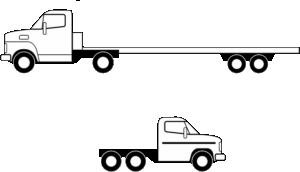Select Semi Trucks
Select Semi Trucks: Navigating the Future of Transportation
Introduction
In the ever-evolving world of logistics and freight transportation, “Select Semi Trucks” have emerged as a game-changer, revolutionizing the way goods are moved across borders and within metropolitan areas. This article aims to provide an in-depth exploration of this innovative concept, its current state, and its profound impact on global trade and local economies. By delving into various facets, from historical roots to future prospects, readers will gain a comprehensive understanding of why “Select Semi Trucks” are not just a passing trend but a crucial element shaping the transportation industry’s landscape.
Understanding Select Semi Trucks: Unlocking the Concept
Definition: Select Semi Trucks, or advanced semi-trailer trucks, represent a sophisticated evolution in heavy-duty transportation. They are designed to enhance efficiency, safety, and environmental sustainability in freight hauling. These trucks are characterized by their larger size, increased payload capacity, and integration of cutting-edge technologies compared to traditional models.
Core Components:
-
Engine and Powertrain: Select Semi Trucks often feature powerful engines, typically diesel or alternative fuel sources, optimized for maximum torque and fuel efficiency. Advanced powertrain systems include hybrid and electric options, reducing emissions and operational costs.
-
Aerodynamics: Streamlined body designs with aerodynamic features, such as curved sides and reduced wind resistance, minimize drag, improving fuel economy and driver comfort.
-
Tires and Suspension: High-performance tires and advanced suspension systems provide better traction, stability, and a smoother ride, reducing wear and tear on both the vehicle and road infrastructure.
-
Technology Suite: These trucks are equipped with sophisticated telematics, fleet management software, driver assistance systems (ADAS), and autonomous driving capabilities. These technologies enable real-time tracking, efficient route planning, enhanced safety features, and improved overall operational visibility.
Historical Context: The concept of Select Semi Trucks has evolved over several decades, driven by increasing demand for faster, more efficient, and environmentally friendly transportation. In the 1980s, the introduction of larger semi-trailers with extended cabs marked a significant shift. However, it is in recent years that technological advancements have enabled the creation of truly “select” trucks, integrating smart features and alternative fuel options.
Global Impact and Trends: A World-Wide Revolution
The influence of Select Semi Trucks extends far beyond national borders, shaping global transportation networks:
-
North America: The United States and Canada have been at the forefront of adopting advanced semi-trucks due to their robust logistics infrastructure and favorable regulatory environment. Companies like Ford, Daimler, and Volvo have led the way in developing and deploying these vehicles.
-
Europe: European countries are embracing Select Semi Trucks to reduce emissions and enhance road safety. The region’s stringent environmental standards and incentives for low-emission vehicles have spurred innovation, with many manufacturers introducing electric and hybrid models.
-
Asia Pacific: Rapid economic growth in countries like China and Japan has led to a surge in demand for efficient freight transportation. Select Semi Trucks are being introduced to meet these demands, focusing on improved fuel efficiency and reduced operational costs.
Key Global Trends:
-
Electric and Alternative Fuel Vehicles: There is a growing trend towards electrifying heavy-duty vehicles due to environmental concerns and government incentives. Many manufacturers are investing heavily in developing battery electric semi-trucks (BESTs) and hydrogen fuel cell trucks.
-
Autonomous Technology: Self-driving semi-trucks have moved from concept to trial stages. Companies like Waymo, TuSimple, and Aurora are testing autonomous trucking technologies, aiming for safer and more efficient transportation.
-
Telematics and Digitalization: The integration of telematics and digital solutions is transforming fleet management. Real-time data analytics, predictive maintenance, and advanced driver assistance systems (ADAS) are becoming standard features in Select Semi Trucks.
Economic Considerations: Driving Market Dynamics
The economic implications of Select Semi Trucks are far-reaching, impacting various sectors:
| Economic Aspect | Impact |
|---|---|
| Market Demand: The growing e-commerce industry and increasing demand for fast, reliable freight delivery have boosted the need for advanced semi-trucks. | Companies investing in Select Semi Trucks gain a competitive edge by offering faster, more efficient services. |
| Investment Patterns: Governments and private investors are allocating funds to support the development and adoption of green trucking technologies. | This influx of capital accelerates innovation and encourages manufacturers to invest in research and development. |
| Economic Growth: The trucking industry contributes significantly to GDP in many countries. Select Semi Trucks, with their improved efficiency, can boost economic growth by reducing transportation costs. | Lower operational expenses lead to increased profitability for carriers and shippers, fostering a more robust economy. |
| Job Market: While autonomous technology may impact certain jobs, it also creates new roles in engineering, maintenance, and fleet management. | The transition to Select Semi Trucks requires reskilling and upskilling of the workforce, leading to a more technologically adept labor market. |
Technological Advancements: Powering the Future
Technological breakthroughs are at the heart of Select Semi Trucks’ appeal, offering numerous benefits:
-
Electric and Hydrogen Fuel Cell Vehicles: These zero-emission trucks reduce air pollution and provide quieter, cleaner transportation. Battery technology advancements have led to longer ranges and faster charging times, addressing range anxiety concerns.
-
Autonomous Driving Systems: Autopilot and full autonomous capabilities enhance safety by reducing human error. These systems use sensors, cameras, and advanced algorithms for navigation, making trucking safer, especially in harsh weather conditions.
-
Telematics and Connectivity: The Internet of Things (IoT) enables real-time tracking, efficient route optimization, and predictive maintenance. Fleet managers gain valuable data insights, allowing for better decision-making and improved operational efficiency.
-
Advanced Safety Features: Systems like collision avoidance, lane departure warning, and adaptive cruise control significantly reduce the risk of accidents and improve overall safety on the road.
Policy and Regulation: Navigating the Legal Landscape
Governments worldwide play a crucial role in shaping the development and adoption of Select Semi Trucks through various policies and regulations:
-
Emissions Standards: Stricter emissions norms, such as Euro 6 or US EPA standards, encourage the use of cleaner technologies, including electric and hybrid trucks.
-
Weight Limits and Dimensions: Regulations governing semi-trailer weights and dimensions impact truck design and capacity. Adjustments in these rules have allowed for larger, more efficient vehicles.
-
Safety Standards: Federal Motor Carrier Safety Administration (FMCSA) regulations in the US ensure driver safety and vehicle integrity. Similar bodies in other countries set standards for crash tests, emergency braking systems, and lane departure warnings.
-
Incentives and Subsidies: Many governments offer incentives, grants, or tax breaks to encourage the adoption of low-emission vehicles and advanced technologies. These policies accelerate the transition to Select Semi Trucks.
Challenges and Criticisms: Overcoming Barriers
Despite their numerous advantages, Select Semi Trucks face several challenges:
-
High Initial Costs: Advanced technology and increased features contribute to higher upfront costs for truck manufacturers and buyers. This barrier may slow down adoption, especially in smaller fleets or developing markets.
-
Infrastructure Limitations: Inadequate charging stations for electric trucks and a lack of supportive infrastructure can limit their operational range and efficiency. Upgrading road networks and implementing smart city solutions are necessary to address these challenges.
-
Skills Gap: The transition to autonomous trucking requires specialized skills, creating a demand for trained professionals. Addressing the skills gap through education and training programs is essential to support this technological shift.
Proposed Solutions:
-
Government Incentives: Providing tax breaks, grants, or low-interest loans can help offset initial costs for buyers and encourage early adoption.
-
Public-Private Partnerships: Collaboration between governments, manufacturers, and infrastructure providers can accelerate the deployment of charging stations and other supporting networks.
-
Industry Training Programs: Developing comprehensive training programs to upskill the trucking workforce will facilitate a smoother transition to new technologies.
Case Studies: Real-World Success Stories
Case 1: Amazon’s Prime Trucking Fleet
Amazon, the e-commerce giant, has pioneered the use of advanced semi-trucks in its delivery network. The company’s Prime Trucking fleet features custom-built vehicles equipped with cutting-edge technology, including electric motors and advanced driver assistance systems (ADAS). This initiative aims to reduce carbon emissions and provide faster, more efficient last-mile delivery services. By 2025, Amazon plans to have 10,000 zero-emission trucks on the road, setting a new benchmark for sustainable trucking.
Case 2: Daimler’s e-Freight Revolution in Europe
Daimler, through its Mercedes-Benz division, has been at the forefront of electrifying heavy-duty vehicles in Europe. The company’s e-Freight initiative focuses on developing and deploying electric semi-trucks for urban and long-haul applications. Daimler’s e-Accelera truck, with a range of up to 400 kilometers, is designed to meet the demands of city centers while offering superior performance. This case study demonstrates how Select Semi Trucks can contribute to cleaner, more sustainable urban transportation.
Case 3: Waymo’s Autonomous Trucking Trials
Waymo, a subsidiary of Alphabet Inc., has been testing autonomous semi-trucks on public roads since 2017. Their fleet includes modified Peterbilt trucks equipped with advanced driverless technology. Waymo’s trials have covered thousands of miles and have successfully demonstrated the safety and efficiency of self-driving trucks. This case highlights the potential for Select Semi Trucks to revolutionize long-haul trucking by improving road safety and reducing operational costs.
Future Prospects: Looking Ahead
The future of Select Semi Trucks is promising, with several growth areas and emerging trends shaping its trajectory:
-
Electric Revolution: The global push towards electrification will continue to drive the development of more efficient battery technologies, extending truck ranges and reducing charging times.
-
Autonomous Dominance: While fully autonomous trucks may take time to become mainstream, advanced driver assistance systems (ADAS) will continue to enhance safety and efficiency. By 2030, it is expected that a significant portion of long-haul trucking operations will incorporate some level of automation.
-
Smart Logistics: The integration of Select Semi Trucks with IoT devices, sensors, and data analytics will enable real-time fleet management, optimized routing, and predictive maintenance. This evolution will enhance operational efficiency and customer satisfaction.
-
Regional Specialization: Different regions may see the adoption of specialized Select Semi Trucks tailored to their unique needs. For instance, coastal areas might focus on electric trucks for reduced emissions, while mountainous regions could prioritize autonomous systems for safer navigation.
Conclusion: Shaping the Transportation Landscape
Select Semi Trucks represent a significant leap forward in heavy-duty transportation, offering improved efficiency, safety, and environmental sustainability. As global trade continues to grow, these advanced vehicles will play an increasingly vital role in connecting economies and facilitating international commerce. The technology, policies, and infrastructure supporting Select Semi Trucks are evolving rapidly, addressing challenges and unlocking new opportunities.
By embracing innovation and investing in Select Semi Trucks, governments, businesses, and consumers can collectively drive a more efficient, safer, and greener transportation future. As the world navigates the complexities of today’s digital era, these semi-trucks will be at the forefront of revolutionizing logistics, fostering economic growth, and enhancing our quality of life.
FAQ Section: Answering Common Queries
Q: How do Select Semi Trucks benefit the environment?
A: These trucks significantly reduce emissions by adopting electric, hybrid, or alternative fuel technologies. They also contribute to cleaner air and a lower carbon footprint, especially in urban areas.
Q: Are autonomous semi-trucks safe?
A: Advanced driver assistance systems (ADAS) and autonomous technologies undergo rigorous testing and adhere to strict safety standards. While they aim for zero accidents, human oversight is still required until fully autonomous trucks are widely adopted.
Q: What role do governments play in promoting Select Semi Trucks?
A: Governments incentivize the adoption of these vehicles through tax breaks, grants, and subsidies. They also implement policies to encourage emissions reductions, improve road safety, and develop supporting infrastructure.
Q: How do Select Semi Trucks impact local economies?
A: By enhancing transportation efficiency, these trucks reduce operational costs for businesses, leading to improved profitability and potentially lower consumer prices. They also create new job opportunities in manufacturing, maintenance, and fleet management.
Q: Can Select Semi Trucks navigate rural or off-road areas?
A: While some advanced semi-trucks have enhanced off-road capabilities, their primary design is for highways and well-maintained roads. Specialized vehicles are available for extreme conditions, but they may not be the norm in all regions.

Top Semi Trucks: Brands, Tech & Cost-Effective Picks
When choosing semi trucks, International Trucks stands out for its robust models suitable for long-haul and local trucking. Prioritize power,…

Secure Hauling: Choosing Trucks, Loading Cargo, Advanced Safety Tech
Heavy-load transportation safety requires meticulous planning, specialized equipment, and adherence to stringent regulations. Modern semi trucks with advanced features like…

Optimizing Fleets: Efficient Diesel Semis for Environmental, Economic Gains
Energy-efficient diesel semi trucks, featuring advanced combustion systems and reduced emissions, offer cost savings and sustainability for long-haul trucking. Accessing…

Top Semi Truck Brands for Long Haul & Eco-Friendly Choices
In a competitive trucking industry, American brands offer high-quality semi-trucks for diverse needs, with powerful engines, fuel efficiency, and advanced…

Top Semi Truck Accessories for Every Job and Journey
Enhancing Select Semi Trucks involves upgrades like turbocharged engines and advanced tech for better performance. Prioritize comfort and safety with…

Maximize Semi Truck Fuel Efficiency with Strategic Choices
Maximizing fuel efficiency in semi trucks is crucial for trucking logistics and rental services. Key factors include vehicle age, engine…

Select Semi Trucks: Maintenance Tips for Optimal Performance
Selecting the right Select Semi Trucks involves aligning vehicle choices with operational needs and financial goals, considering industry-specific requirements like…

Select Your Dream Semi: Needs, Research, Test Drive
To select semi trucks, first understand your cargo needs and budget. Research different models and top brands like European semi…

Maximizing Efficiency with Select Semi Trucks in Freight Hauling
Strategic selection of semi trucks involves considering project requirements, bed configuration, and care needs to ensure optimal choice. Evaluating unique…

Modern Semi Trucks: Upgrade Your Hauling Today
Modern semi trucks, with advanced engines, aerodynamics, and technology, revolutionize hauling. Semi trailer rental services offer flexibility. When selecting Semi…